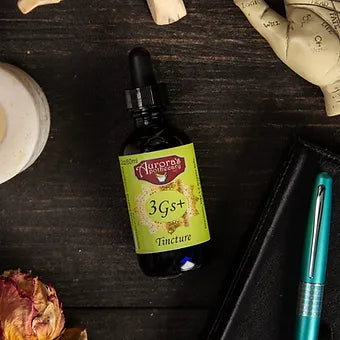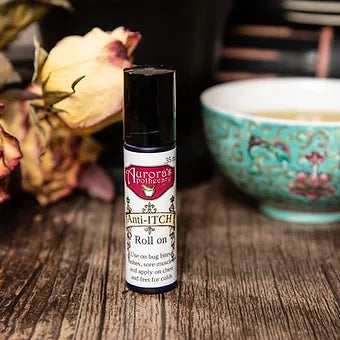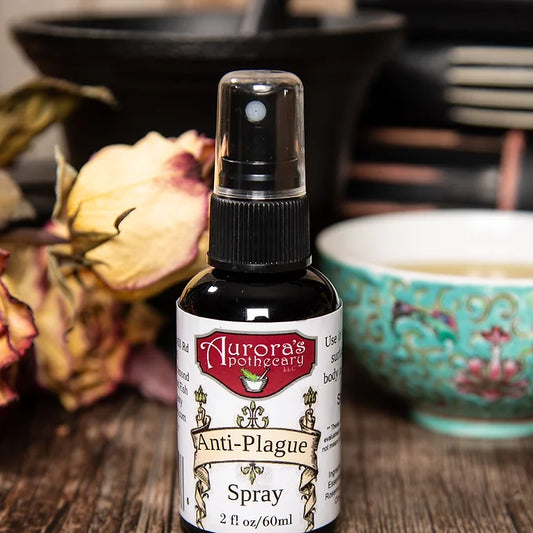The earliest herbal stories of Christmas are rooted in the desert of the Holy Land and begin with the the wise men bearing gifts of gold, myrrh and frankincense to the newborn child. Other holiday traditions, especially those of the Northern regions of Europe are passed down from times before, when the people endured the dark days of midwinter on the hope of eternal rebirth of the Sun and Earth. Many of these stories and legends of miraculous herbs and plants were folded into new Christmas stories, and all were passed down to us from mother to child, generation to generation, to form our own unique Christmas traditions. During the holidays we enjoy decorating pine trees, hanging branches of mistletoe in strategic places, and the resinous scent of aromatic incense, without giving much thought to how and why these herbal traditions started, or the very real medicinal benefits of these holiday herbs, plants and oils.
The aroma of cinnamon evokes memories of Christmas kitchens - warm, spicy and intensely fragrant. Cinnamon makes a great tasting tea alone or added to almost any herbal tea blend for it's spicy, warm properties. The addition of honey brings out the organic sweetness of the cinnamon and complements the antibiotic healing for colds, sore throats, and other viral infections. Cinnamon has an energizing and uplifting effect on mood. Cinnamon essential oil brings this fantastic scent to your home or workspace.
Sage, rosemary and thyme are the true herbs of winter, not only in the kitchen but as herbal medicines that are especially potent against the chills of winter. The tradition of using sage at Thanksgiving began with the early American colonists. They also depended upon sage a valuable remedy for the colds and fevers that came with the harsh New England winters. There is something very grounding and relaxing about a hot cup of sage tea with lemon, sipped slowly while the winter blows cold outside your warm home. The cold and sniffles you felt coming on melt away in the fragrant steam. Sage has excellent antibacterial and astringent properties, which explain the herbs effective use in gargles for sore throats.
The invigorating scent of pine pervades the home when the tree is brought indoors, and is perhaps the signature aroma of the holiday season. Wreaths and pine cone displays can take the place of a tree. Pine has a long history of use as a pain reliever. Pine needle oil is used as a component in cough and cold medicines, vaporizer fluids, and nasal decongestants.
Several herbs are appropriate for small live Christmas trees. They add diversity to the season and are useful after the Christmas season. They are Rosemary, Greek Myrtle, and Bay Laurel. Rosemary is used in Europe because of the associations with Mary (the flowers changed from white to blue after she laid her cloak on it, and blue is the traditional church color associated with Mary). Additionally, it has a wonderful piney scent and makes a very small table tree.
Kissing under the mistletoe is one of the most widely known holiday traditions. Mistletoe also figures in a Scandinavian legend of Balder, god of Peace, who was slain with an arrow of mistletoe. He was restored to life, and mistletoe was then given into the keeping of the goddess of Love, and it was ordained that everyone who passed under it should receive a kiss, to show that the branch had become an emblem of love, and not of hate.
Frankincense and Myrrh -Christianity teaches that frankincense and myrrh were given by the Three Kings along with gold, as gifts to baby Jesus. They were once considered to be rare treasures. Legend has it that both frankincense and myrrh were worth their weight in gold. Also, yarrow sometimes called the “carpenter’s weed” because of its healing powers, is significant in the holiday tradition because of its association with Joseph the Carpenter. Today there is a blend of frankincense, myrrh and gold yarrow which is named “Potpourri of Three Kings”.
So this holiday season, use your nose and your taste buds and experience and enjoy those herbs around you. Mull some hot apple cider, put some peppermint candy in your mouth, and kiss under the mistletoe!





